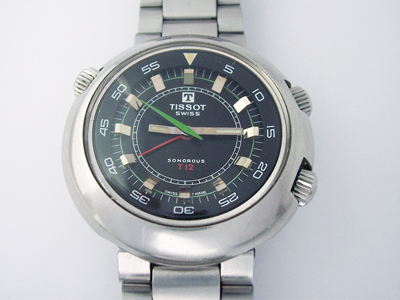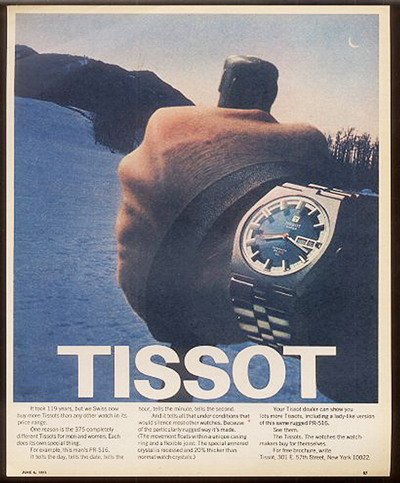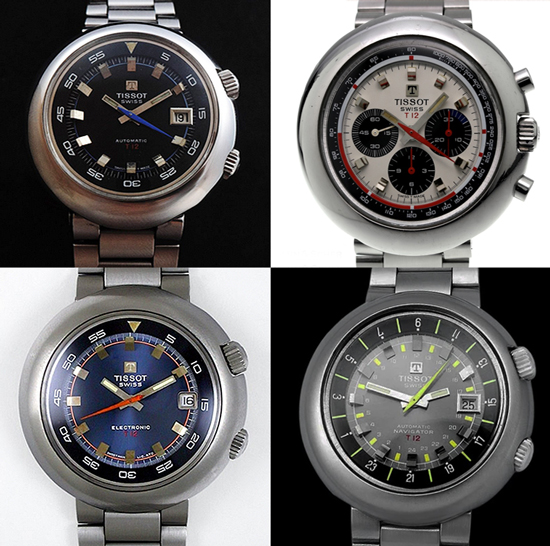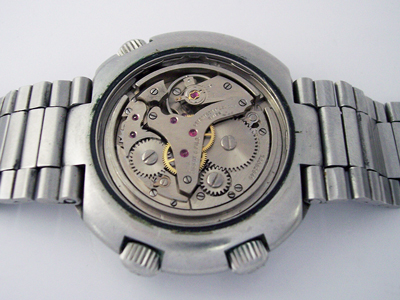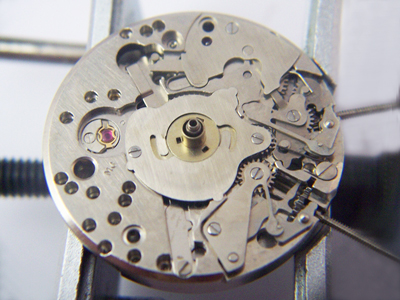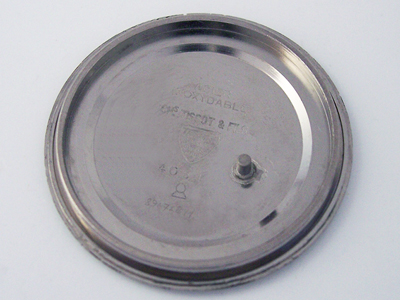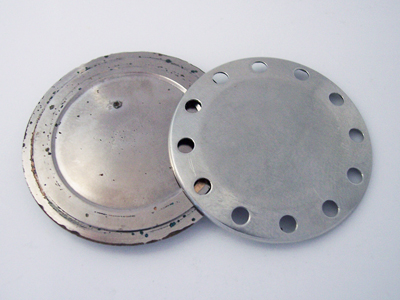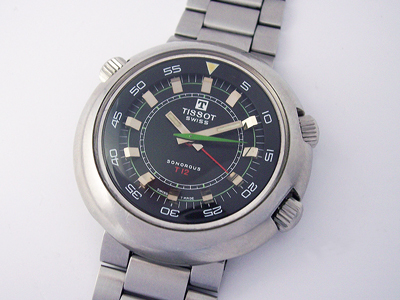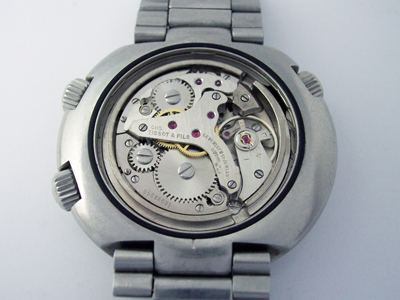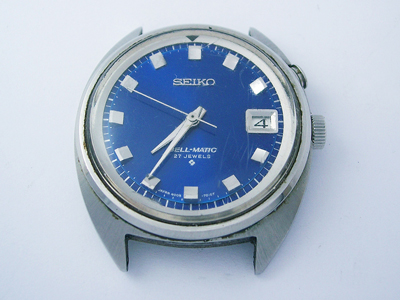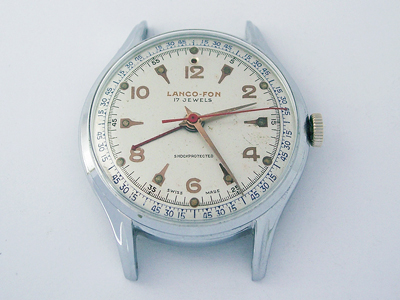There can never be enough vintage alarm watches on the blog, so let’s have a look at this rare bird, the Tissot T12 Sonorous.
(Click pictures to enlarge)
The T12 and PR (Particularly Resistant) model lines were produced from the 1950’s until the 1970’s and resulted in some of the most interesting watches in Tissot’s long history. Both lines focussed more on the ‘active’ segment of the market such as divers, drivers and travellers. This was clearly evident from their advertising during that period which featured many scenes of adventure, this advert for the PR-516 from 1971 being pretty typical – he’s actually wearing the watch upside down, but we’ll let that pass… perhaps his brain froze in the icy tundra. 🙂
While the meaning of ‘T12’ cannot be confirmed, the most plausible explanation is that the ‘T’ stands for Tissot and ’12’ represents a water resistance level of 12 Atmospheres (12 ATM = 400ft). As the water resistance level was highlighted specifically in the advertising for the earliest T12 models, it gives this explanation some credence, but the actual meaning is still open for debate.
The watch in this post is one of the later T12 models from a series nicknamed ‘the flying saucers’, for obvious reasons. With solid stainless steel cases, mineral crystals, integrated bracelets and a diameter of 44mm, these watches have some serious wrist presence.
As well as the Sonorous, in the same range was a traditional three hand automatic (available in day or day/date format, with or without an internal rotating bezel), a Lemania powered chronograph, a 24hr GMT/Navigator (with a 24hr or World Time rotating bezel) and also an Electronic model powered by a hybrid ESA/Dynatron calibre (the same one used in this Tissot Electronic Seastar that I wrote about back in 2010).
Here is a link to a vintage T12 brochure that gives further information on each model (sadly the Sonorous is not included… too rare? Maybe.)
Inside the Sonorous you will find one of two A. Schild manually wound alarm calibres, the Cal. 1475 in watches produced before 1970, or the Cal. 1930 which superceded the Cal. 1475 some time in 1969, increasing the beat rate from 18,000 bph to 21,600 bph and added a fine adjuster for the regulator.
As the watch in this post dates to 1967, it has the 17 jewel A. Schild Cal. 1475 inside (re-branded as the Tissot Cal. 780). The movement was in reasonable condition overall with no sign of corrosion, but was pretty scruffy so it obviously hadn’t been serviced for quite some time.
The Cal. 1475 and 1930 were both very popular calibres and can be found in the majority of Swiss alarm watches produced during the 1960’s and 70’s. They both work on the same principle that the mainspring is wound and the time set by the crown at at 4, and the alarm mainspring is wound and the alarm time set using the crown at 2. On the Sonorous, the additional crown on the top left is used to rotate the inner bezel.
There is quite a lot going on under the dial on an A.Schild alarm calibre…
…but rather than explain how it all works, grab a time machine and transport yourselves back to 2008 and read this post that I wrote about a Poljot 2612.1 powered Sekonda which uses exactly the same design.
One additional thing worth noting is that, as is typical of these A. Schild designed alarm calibres, the hammer strikes a pin mounted in the caseback which acts as a resonator, so it’s essential that the caseback is orientated correctly when pressed back into place.
You’ll see too that this case has a helmet logo inside which denotes that the watch has an EPSA Compressor case – a patented case designed by the Swiss casemaker Ervin Piquerez (EPSA). You’ll see the word Compressor used quite a lot, typically for any watch with two crowns and an internal rotating bezel, but only the EPSA Compressor cases have the helmet logo.
Another thing to note about the case on the Sonorous is that the back is made up of two separate parts, the resonator and a perforated cover which forms an echo chamber for the alarm, increasing its volume.
One drawback of this design is that the chamber collects debris over time and when exposed to moisture can tarnish the sounding plate over time, as was the case here. Thankfully when the cover is in place, most of the tarnish is hidden.
With the movement serviced and the case and bracelet cleaned, the watch could be rebuilt, tested and returned to its owner.
Rich.
** Many thanks to Stephen Morris for letting me feature his watch on the blog. **

